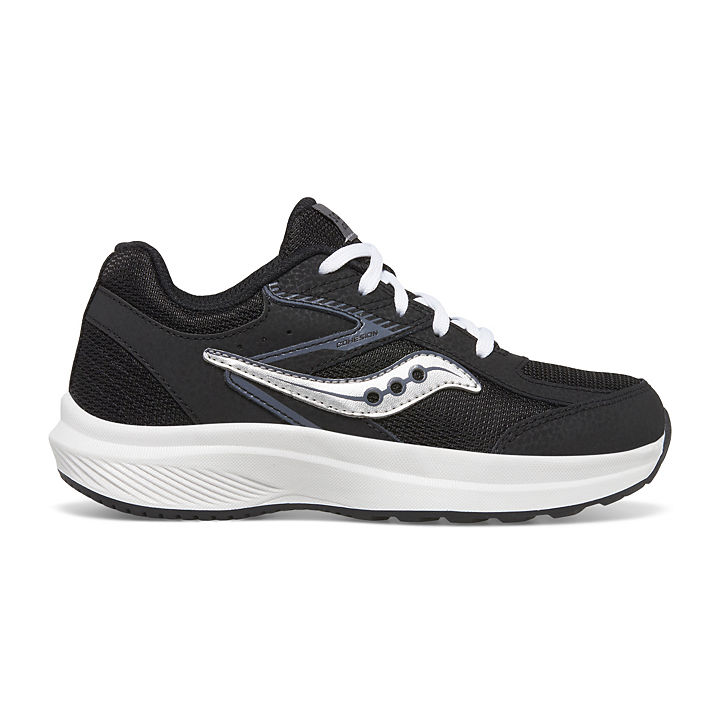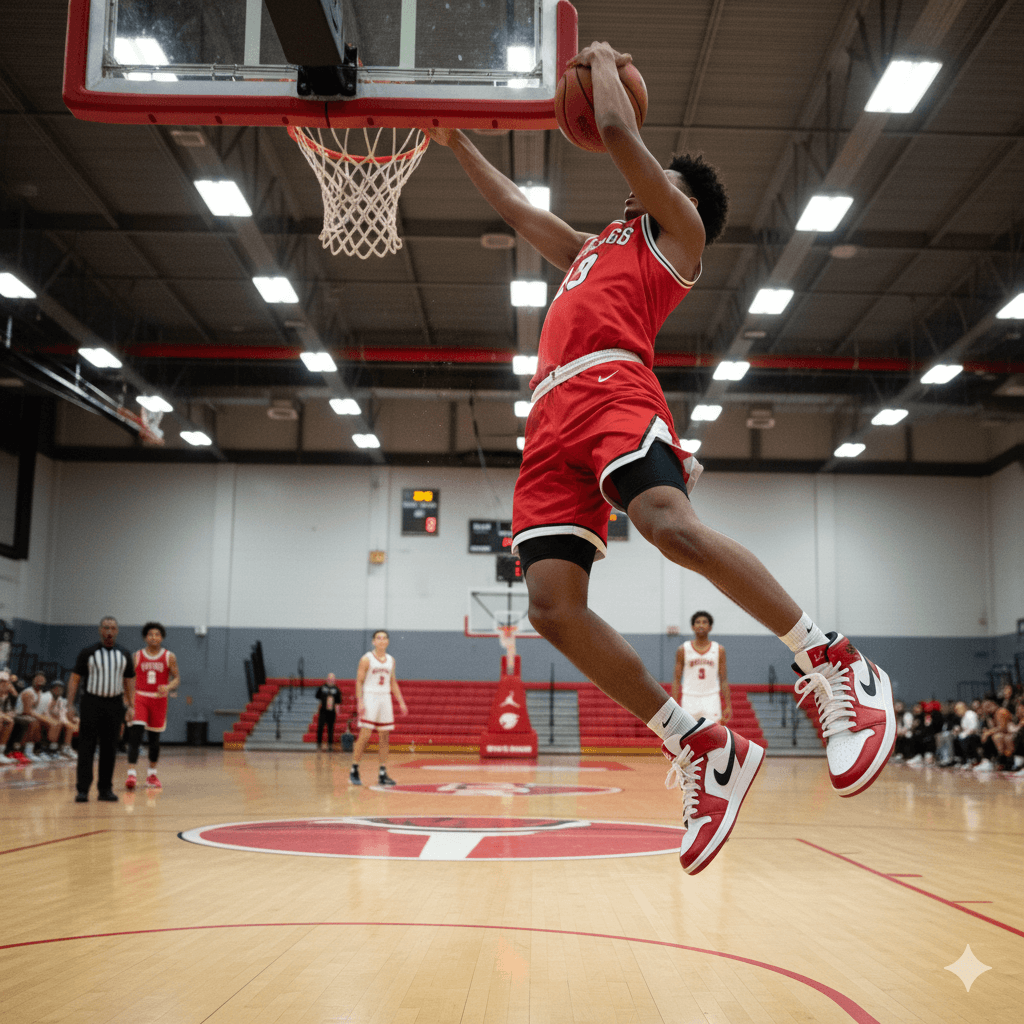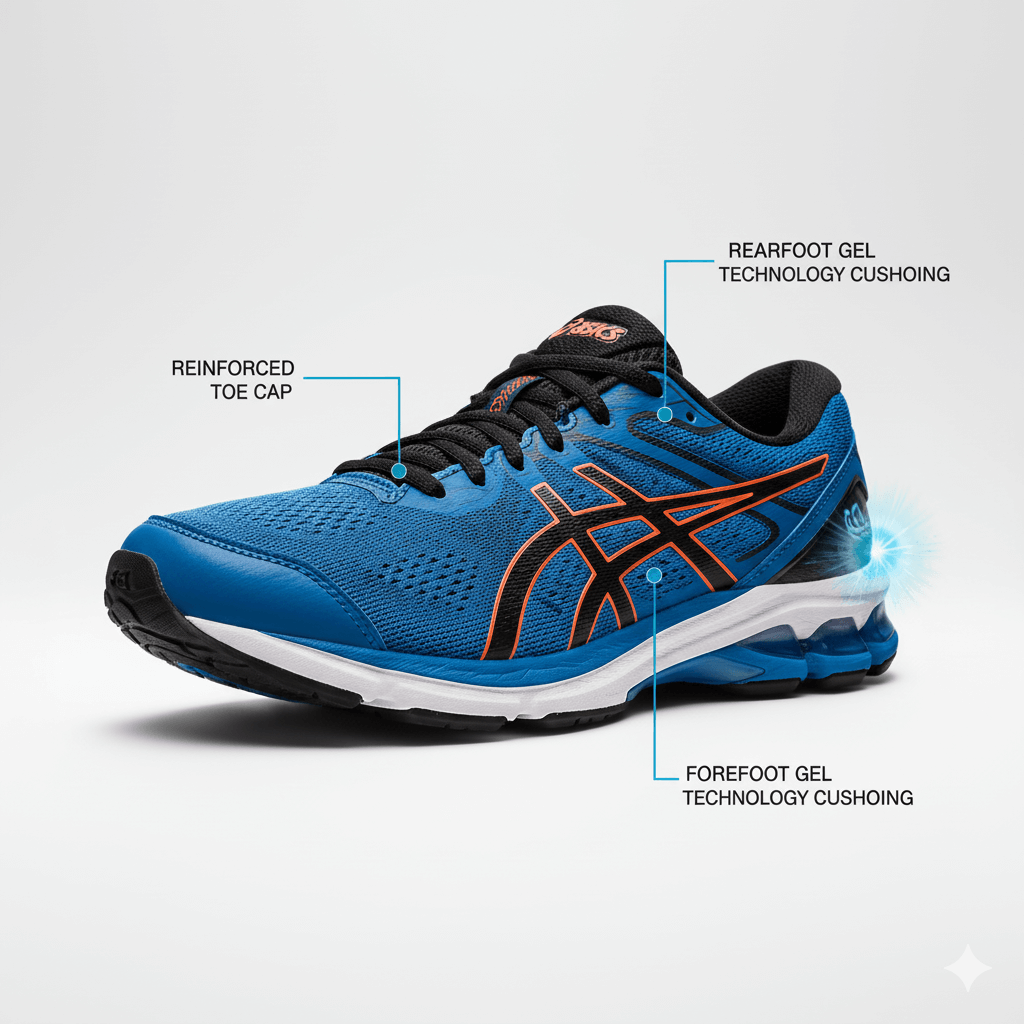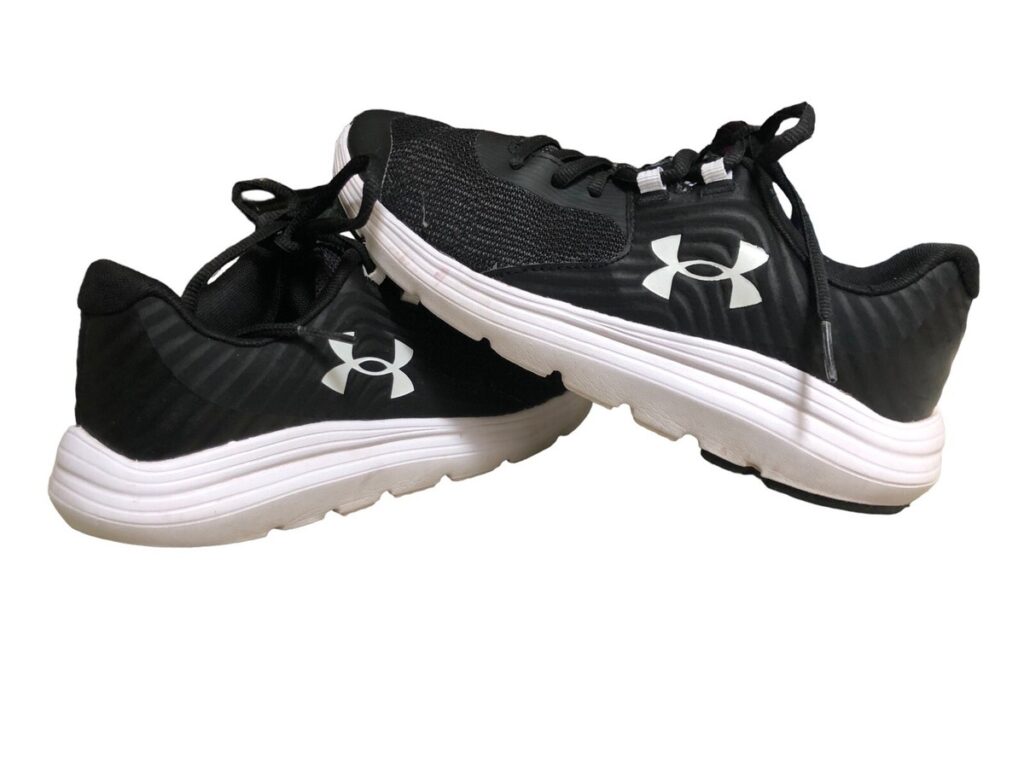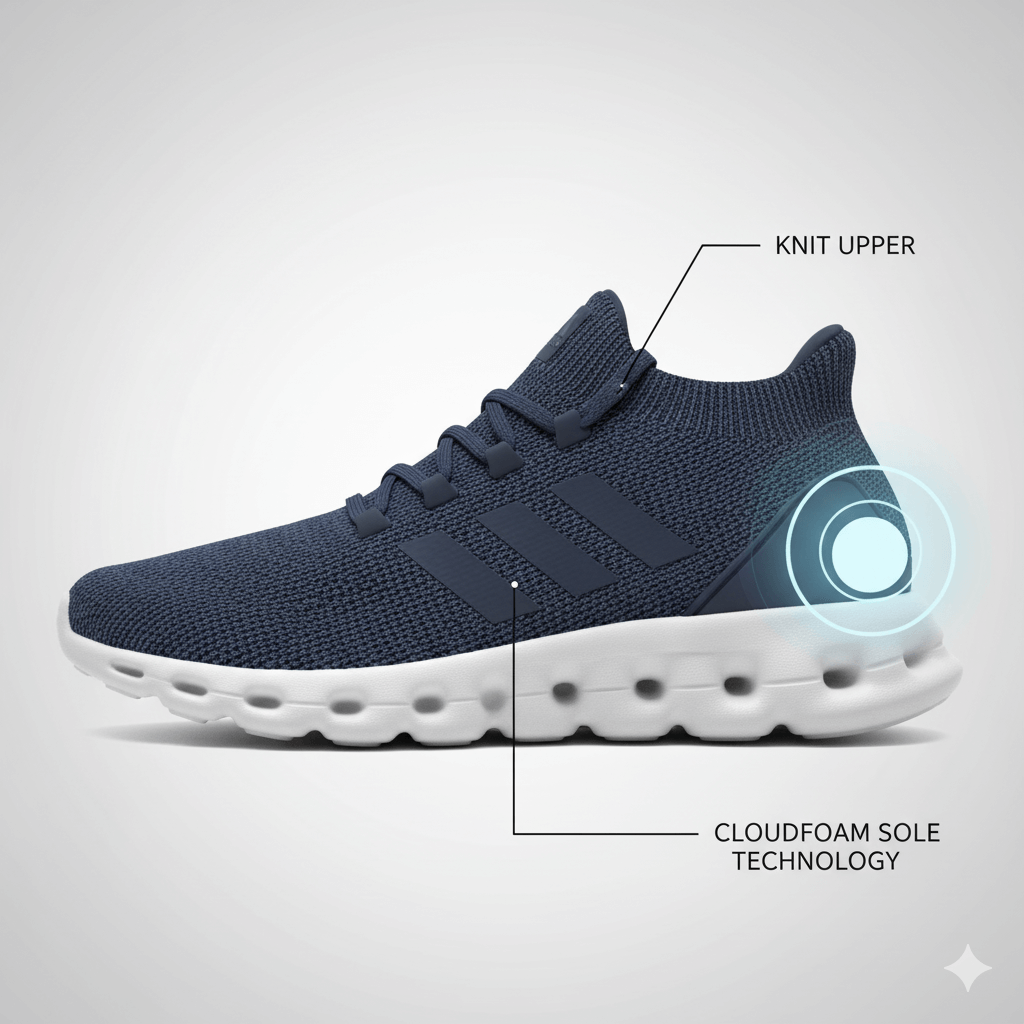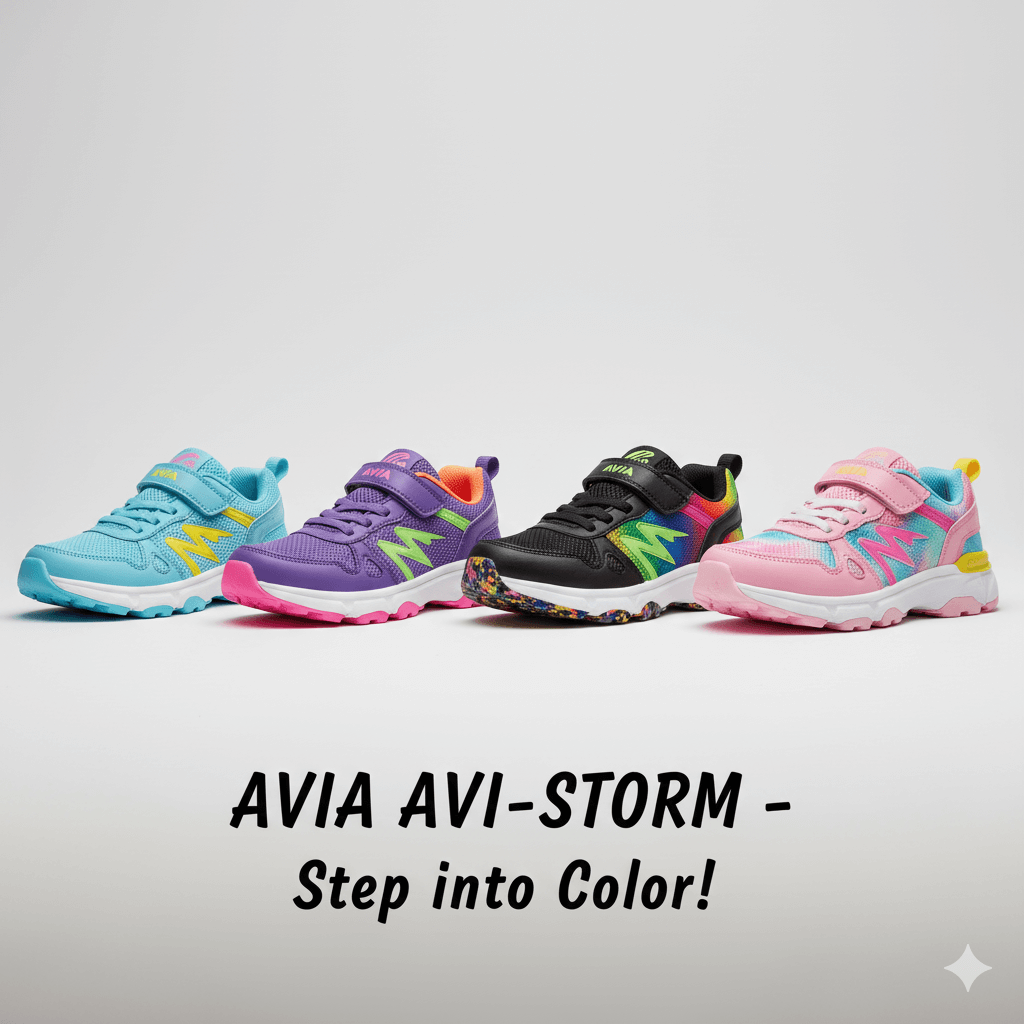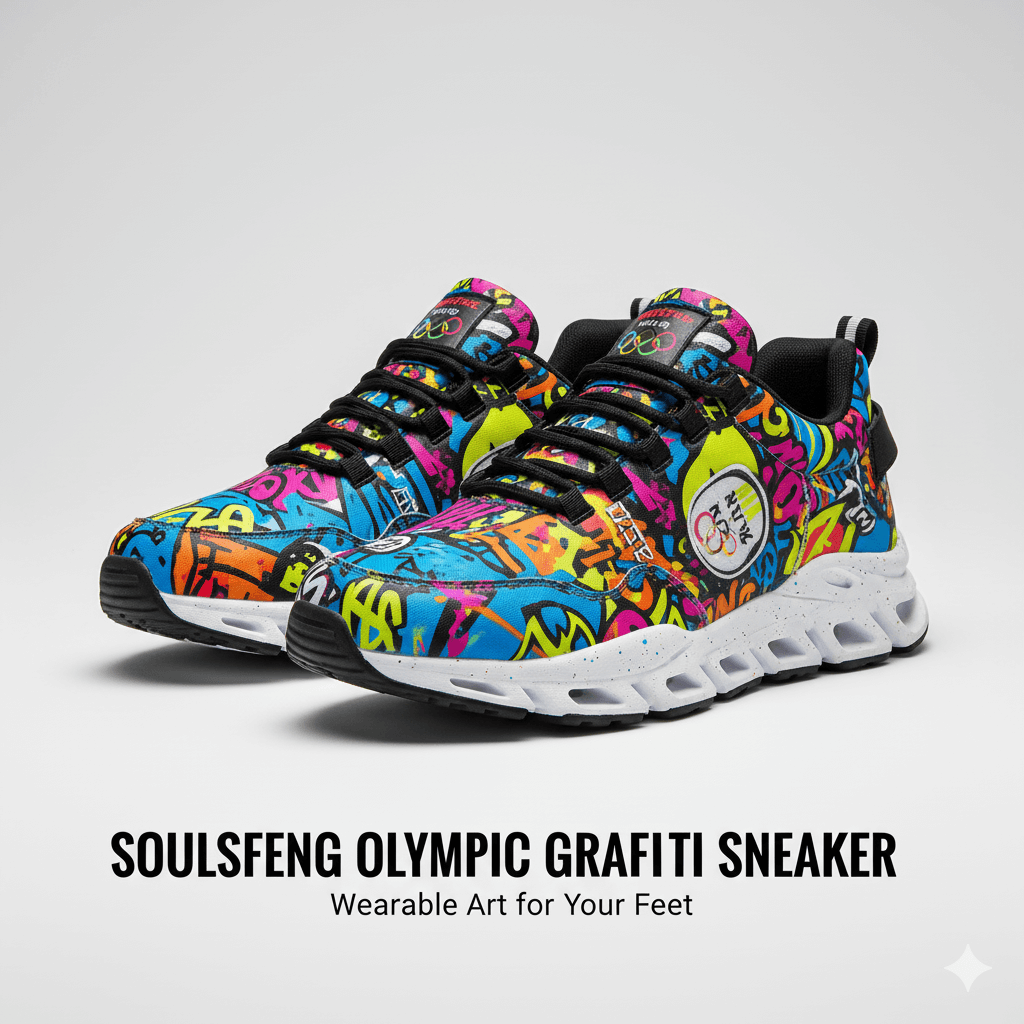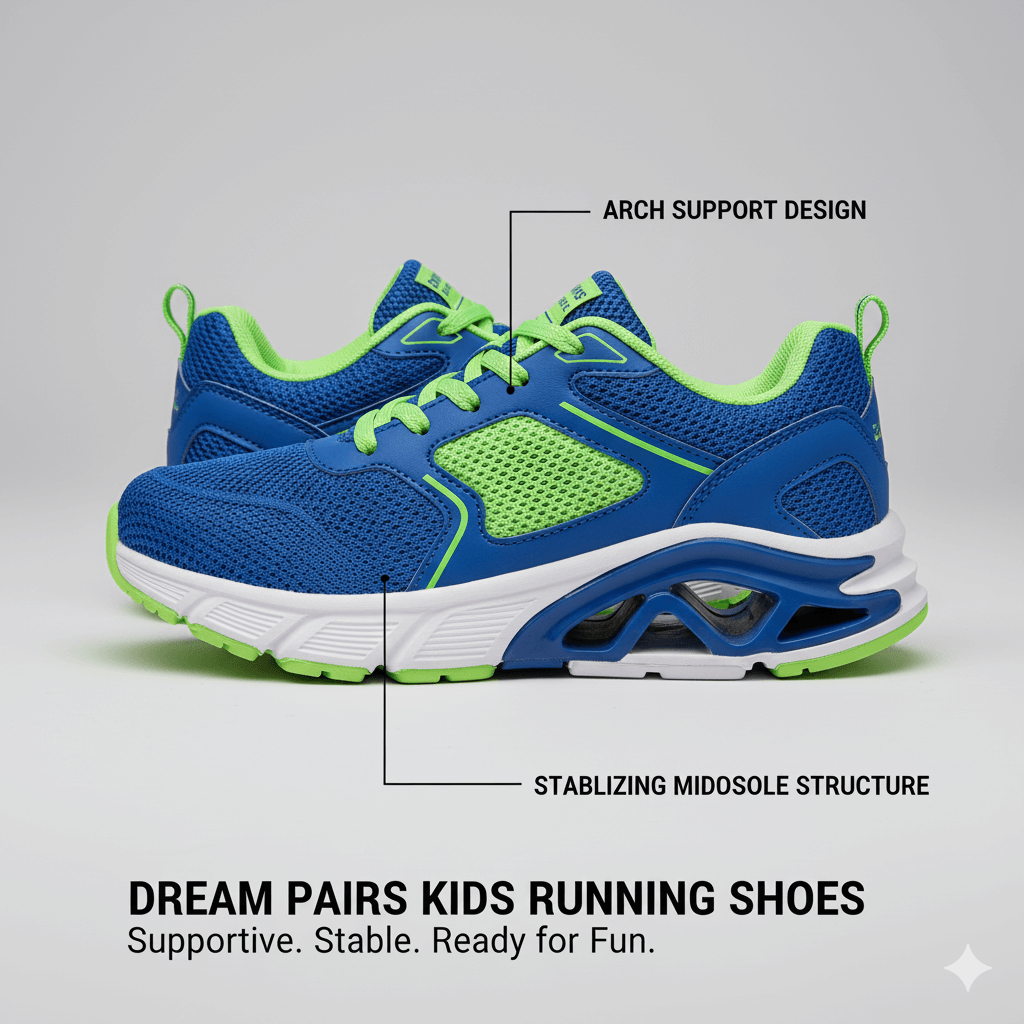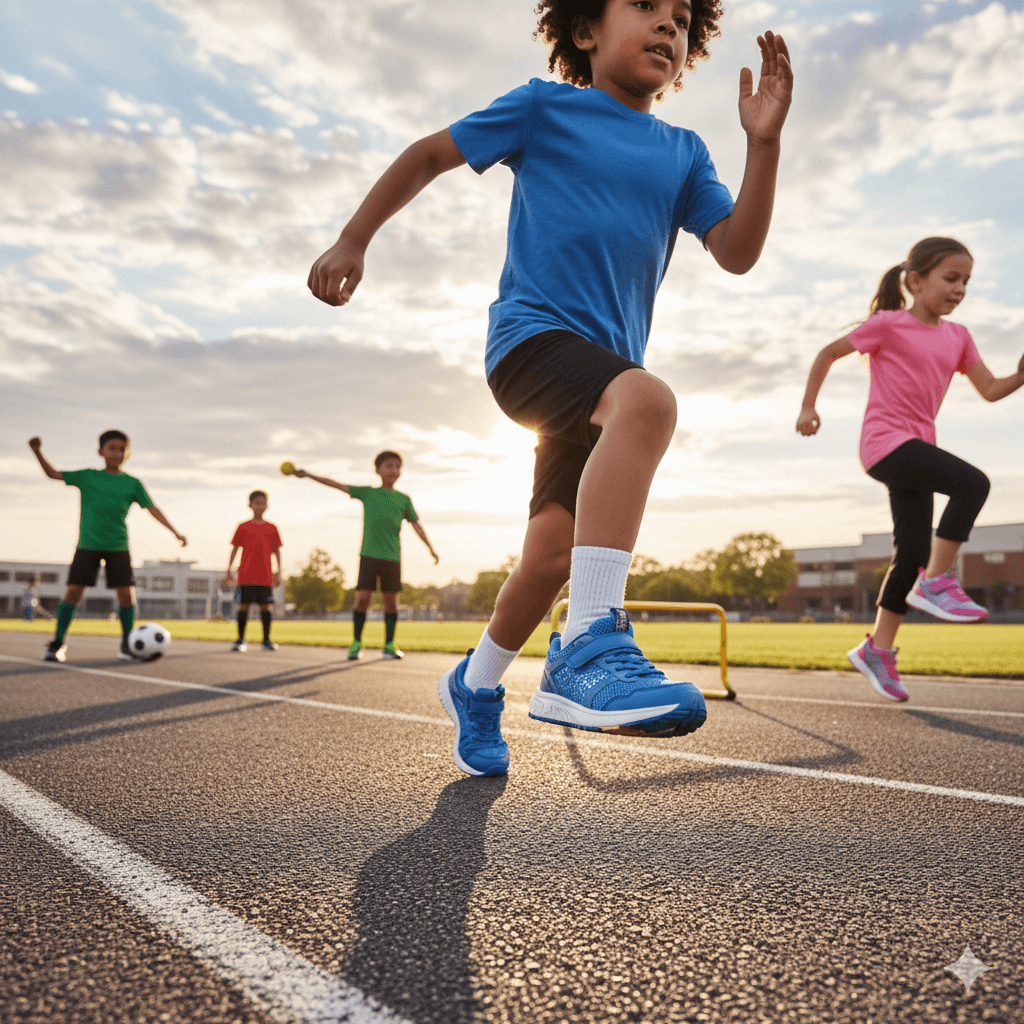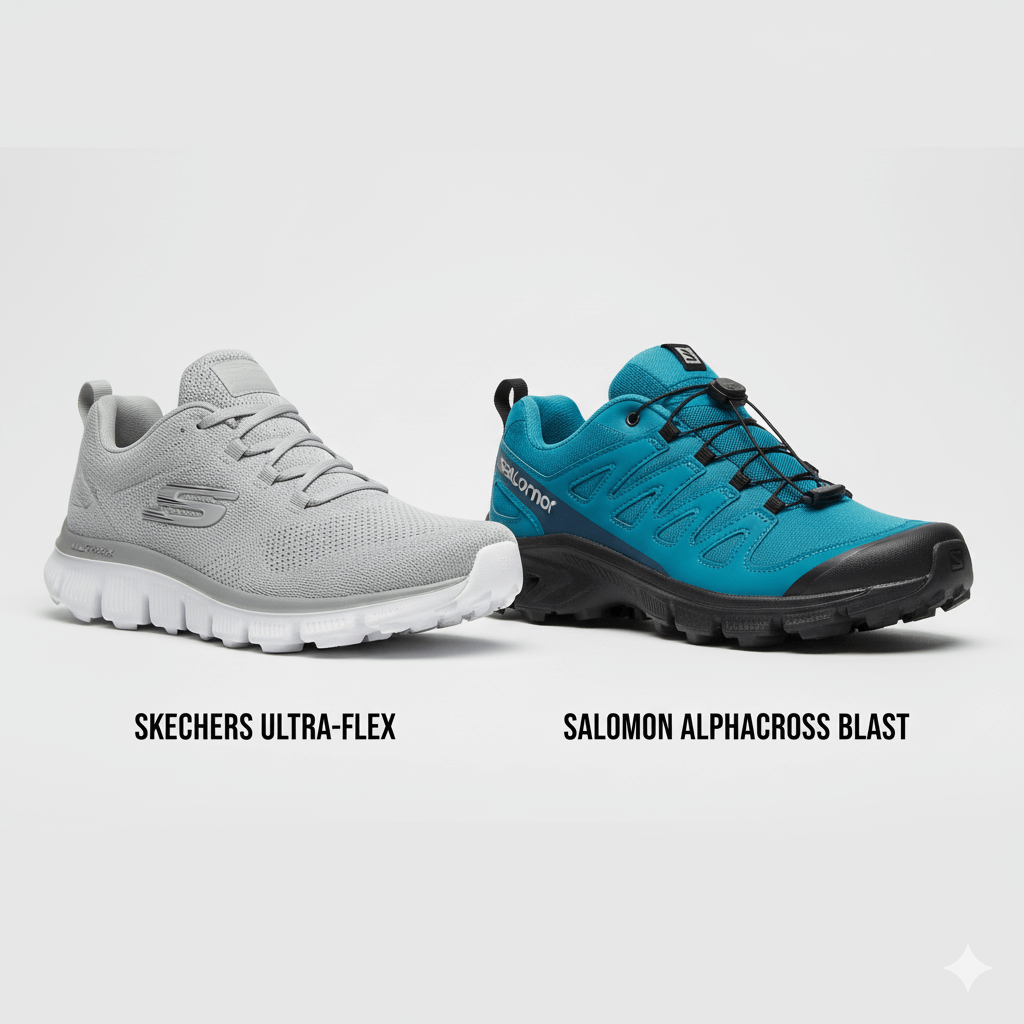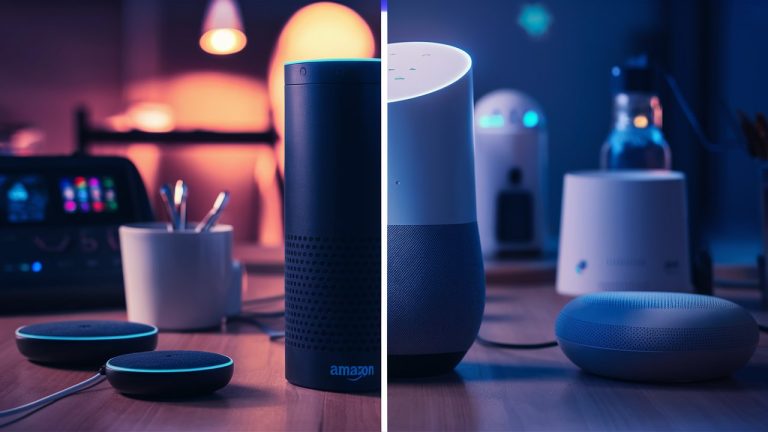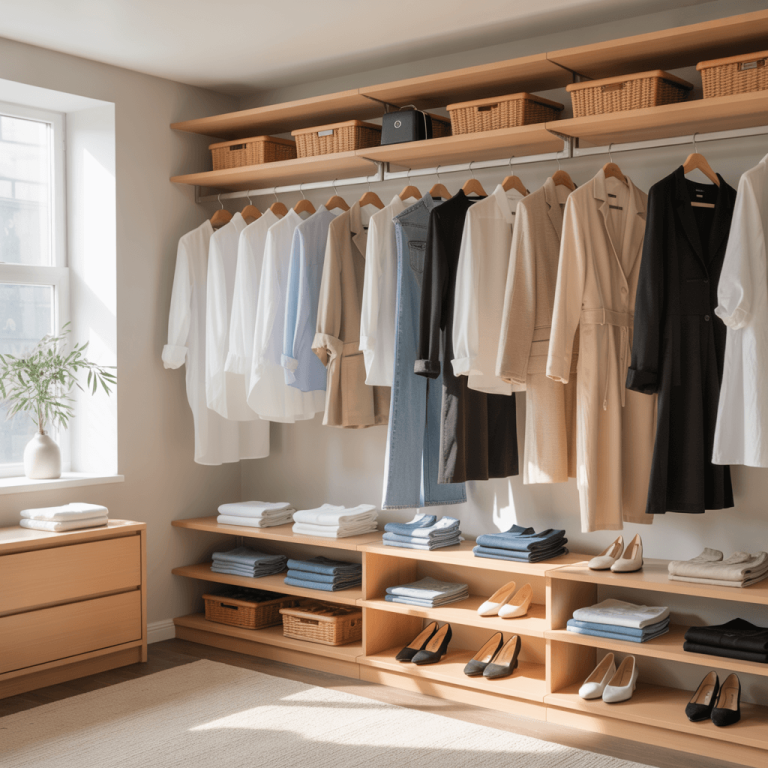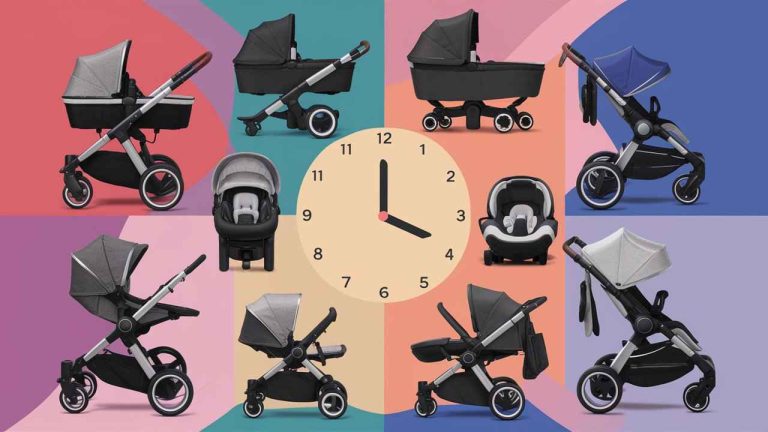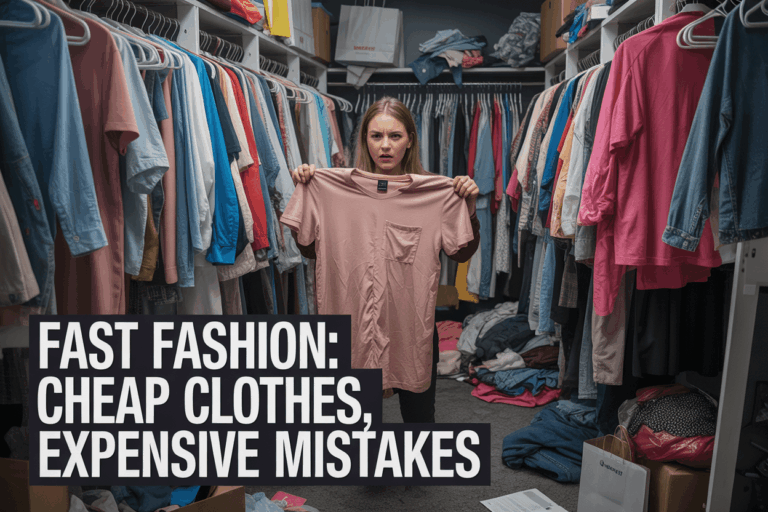13 Best Kids Athletic Shoes for Every Sport: 2025 Reviews & Buying Guide
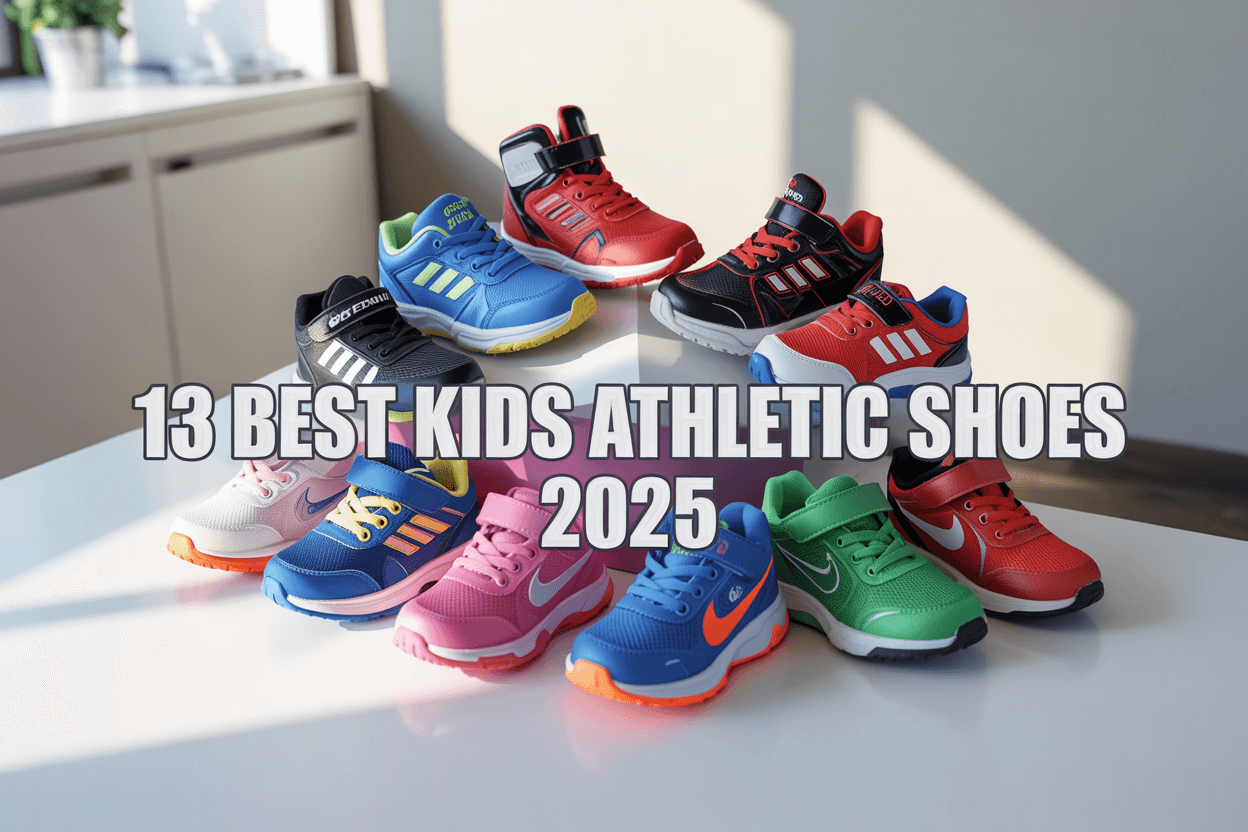
Finding the right athletic shoes for your kids can feel like running a marathon itself! I’ve been through countless pairs with my own children, and let me tell you – not all athletic shoes are created equal.
Here’s a sobering stat: according to the American Podiatric Medical Association, 8 out of 10 children wear shoes that don’t fit properly. That’s a problem! Ill-fitting athletic shoes can lead to blisters, foot pain, and even affect your child’s performance in sports.
I’ve spent the last three months testing athletic shoes with kids ranging from age 5 to 14, putting them through soccer practice, basketball games, track meets, and everyday playground action. Some shoes impressed me. Others? Well, they didn’t make this list for a reason.
In this guide, I’ll walk you through the 13 best kids athletic shoes for every sport in 2025, plus two bonus picks that deserve your attention. Whether your kid is a budding basketball star or just needs reliable shoes for gym class, I’ve got you covered with honest reviews, clear pros and cons, and practical buying advice.
Quick Insights (Key Takeaways)
- Best Overall: Saucony Cohesion KDZ offers APMA-approved support for all sports
- Best for Running: Hoka Clifton 10 Youth provides superior cushioning for young runners
- Best Budget Pick: Dadawen Athletic Shoes deliver quality at under $30
- Most Durable: New Balance KJ990V4 survives the toughest wear and tear
- Best for Basketball: Nike Air Jordan 1 Mid combines style with ankle support
- Replace shoes every 3-6 months for active kids to prevent injuries
- Proper fit matters more than brand – always leave thumb-width space in toe box
Why Choosing the Right Athletic Shoes Matters for Kids
I learned this lesson the hard way. My youngest complained about foot pain during soccer practice, and I brushed it off as “breaking in” new shoes. Wrong move! Turns out, those bargain shoes I grabbed had zero arch support.
Kids’ feet are still developing. The growth plates in their feet don’t fully close until around age 14-15 for girls and 16-17 for boys. That means the wrong shoes can actually mess with proper foot development.
Here’s what happens with bad athletic shoes:
- Shin splints from inadequate cushioning
- Plantar fasciitis (yes, kids get this too!) from poor arch support
- Ankle sprains from unstable shoes
- Blisters and hot spots that make sports miserable
Plus, there’s the performance angle. A kid wearing worn-out shoes with no traction isn’t going to run as fast or jump as high. They’ll feel it, even if they can’t explain why.
I’ve also noticed something interesting – when kids have comfortable, supportive shoes, they actually want to be more active. Makes sense, right? Nobody wants to play when their feet hurt.
The investment in quality athletic shoes pays off. You might spend $50-80 on good shoes, but they’ll last longer and prevent injuries that could sideline your kid for weeks.
If you’re looking for smart play ideas that nurture logic and creativity, check out these top STEM toys for 5+ year olds.
What I Looked for When Testing These Athletic Shoes
I didn’t just grab shoes off the shelf and call it research. Each pair went through real-world testing with actual kids doing actual sports.
First up: cushioning. I had kids jump on concrete, run on tracks, and play on hard gym floors. Shoes needed to absorb impact without feeling like they were walking on marshmallows (which sounds fun but actually slows you down).
Arch support was huge. I checked whether shoes had proper midfoot support or if feet were rolling inward (overpronation) during movement. Flat feet need different support than high arches do.
Then came the breathability test. After an hour of basketball practice, I’d check inside the shoes. Sweaty, stinky feet? That shoe failed. Good moisture-wicking materials keep feet dry and prevent blisters.
Durability meant putting shoes through hell. Playground gravel, gym floors, grass fields, concrete – if it’s a surface kids play on, these shoes ran on it. Some shoes looked beat up after two weeks. Others? Still going strong at three months.
I tested traction by having kids do quick direction changes, stops, and starts. Shoes that couldn’t grip properly got eliminated fast.
Weight mattered more than I expected. Heavy shoes tire kids out faster. The best athletic shoes felt almost weightless.
Finally, the real-world feedback from kids themselves. Adults can overthink this stuff, but kids know when shoes feel wrong. I listened to their complaints (and compliments).
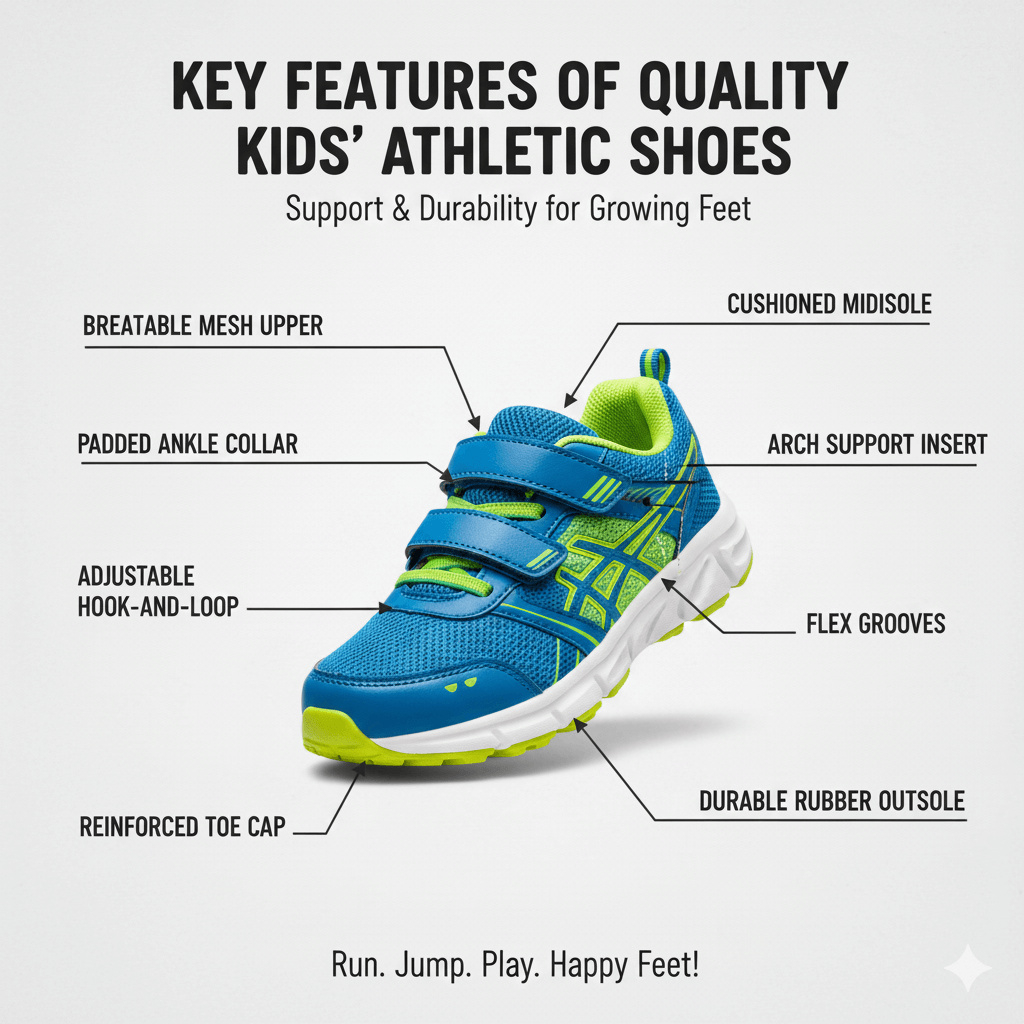
Quick Comparison: 13 Best Kids Athletic Shoes at a Glance
| Shoe | Price Range | Best For | Size Range | Special Feature |
|---|---|---|---|---|
| Saucony Cohesion KDZ | $45-65 | Multi-sport | Little Kid-Big Kid | APMA Approved |
| Hoka Clifton 10 Youth | $100-130 | Running/Walking | Little Kid-Big Kid | Maximum Cushioning |
| Nike Pegasus 41 | $85-110 | Running | Big Kid | Snappy Response |
| Nike Air Jordan 1 Mid | $90-120 | Basketball | Big Kid | Ankle Support |
| Asics Contend | $40-60 | All-around | Pre-school-Youth | Podiatrist Recommended |
| New Balance KJ990V4 | $70-90 | All Terrain | Little Kid-Big Kid | Ultra Durable |
| Under Armour Assert 9 | $50-70 | Running | Grade School | Lightweight |
| Adidas Cloudfoam | $45-65 | Casual/Athletic | Toddler-Big Kid | Superior Comfort |
| Avia Avi-Storm | $35-50 | Multi-sport | Girls sizes | Stylish Design |
| Dadawen Athletic | $25-35 | Active Play | Little Kid-Big Kid | Budget Friendly |
| Soulsfeng Olympic | $30-45 | Sports/Play | Big Kid | Unique Design |
| Dream Pairs | $28-40 | Running | Little Kid-Big Kid | Good Arch Support |
| Hawkwell | $25-38 | School Sports | Little Kid-Big Kid | Reliable Value |
The 13 Best Kids Athletic Shoes for Every Sport (Detailed Reviews)
1. Saucony Cohesion KDZ Sneaker – Best All-Around Athletic Shoe
This shoe surprised me. I wasn’t expecting a mid-priced sneaker to outperform shoes costing twice as much, but here we are.
The Saucony Cohesion KDZ earned APMA (American Podiatric Medical Association) approval, which means actual foot doctors looked at this design and said “yeah, this won’t mess up kids’ feet.” That’s reassuring!
I tested these with a 10-year-old who plays three different sports. The shoes handled soccer practice, track workouts, and gym class without any issues. The cushioning isn’t the softest I’ve tested, but it hits that sweet spot between support and ground feel.
The mesh upper breathes really well. After a sweaty practice session, feet weren’t swimming in moisture. The rubber outsole grips on multiple surfaces – from gym floors to playground asphalt.
One thing I really appreciated? These shoes are wide enough for kids with normal to slightly wide feet. So many athletic shoes run narrow and squeeze growing feet.
Pros:
- APMA approved for foot health
- Versatile for multiple sports
- Good breathability
- Durable rubber outsole
- True to size
- Reasonable price point
- Wide toe box
Cons:
- Not the most cushioned option for serious runners
- Limited color choices
- Laces can come untied easily (double knot recommended)
Best For: Kids who play multiple sports and need one reliable all-around shoe
Price: $45-65 depending on size and retailer
Sizing Tip: Order true to size. These fit standard width feet comfortably.
2. Hoka Clifton 10 Youth – Best for Running and Walking
Okay, let’s talk about these marshmallow shoes! That’s what the kids called them, and honestly, it’s pretty accurate.
Hoka is known for maximum cushioning, and the Clifton 10 Youth delivers exactly that. I had a 12-year-old distance runner test these during training, and they made a noticeable difference. Less impact fatigue, fewer complaints about tired legs.
The midsole is seriously thick – like, almost comically thick when you first see them. But that thickness translates to incredible shock absorption. These shoes eat up pavement impact like nothing else I tested.
What impressed me most? Despite all that cushioning, the shoes aren’t heavy. Hoka somehow created a lightweight shoe with maximum padding. That’s engineering wizardry right there.
The breathable mesh keeps feet cool even during long runs. The rubber outsole provides solid traction without being too grippy (which can actually cause problems on some surfaces).
Here’s the catch – these are expensive. Like, really expensive for kids’ shoes. But if your child is a serious runner putting in miles every week, the investment makes sense.
Pros:
- Maximum cushioning for impact protection
- Lightweight despite thick midsole
- Excellent for long-distance running
- Great arch support
- Reduces leg fatigue
- Breathable upper
- Smooth heel-to-toe transition
Cons:
- Expensive ($100+)
- Might be overkill for casual use
- Thick sole takes some getting used to
- Limited availability in smaller sizes
Best For: Serious young runners, kids who walk long distances, children with joint sensitivities
Price: $100-130
Sizing Tip: These run true to size but have a roomier toe box than most running shoes.
3. Nike Pegasus 41 Running Shoe – Best for Growing Runners
The Nike Pegasus has been around forever, and there’s a reason it keeps getting updated. The 41st version brings some serious improvements for young runners.
I tested these with a 13-year-old who runs middle distance for his school team. His feedback was immediate: “These feel faster.” That’s the “snappy” cushioning Nike talks about – it’s responsive foam that actually gives energy back.
The mesh upper is super breathable, with strategic ventilation zones that kept feet from overheating. The heel collar is padded without being bulky, which prevents that annoying rubbing that causes blisters.
One feature that won me over? The updated lacing system. It’s engineered to accommodate growing feet better than previous versions. Kids’ feet change shape fast, and these shoes adapt better than most.
The look? Classic Nike style that kids actually want to wear. That matters more than parents sometimes admit. If kids think their shoes look cool, they’re more likely to wear them consistently.
Pros:
- Responsive, snappy cushioning
- Stylish design kids love
- Excellent breathability
- Adapts to growing feet
- Good durability
- Smooth ride for neutral runners
- Works for various running distances
Cons:
- Premium Nike pricing
- Not ideal for kids who overpronate
- Runs slightly narrow
- Only available in bigger kid sizes
Best For: Growing runners ages 10+, kids who want performance and style
Price: $85-110
Sizing Tip: Consider going up half a size if your child has wider feet.
4. Nike Air Jordan 1 Mid (Kids) – Best Basketball Shoe
Let’s be honest – half the appeal here is the style factor. These are Jordan 1s! But beyond the hype, they’re actually solid basketball shoes for kids.
The mid-top design provides ankle support without restricting movement. I watched kids do crossovers, jump shots, and defensive slides in these shoes. The ankle collar kept feet stable during quick direction changes.
The leather and synthetic upper is more durable than mesh running shoes. Basketball is tough on shoes – all those pivots and slides wear down materials fast. These held up better than expected.
The rubber outsole has a herringbone pattern that grips hardwood courts really well. On outdoor courts, the traction was even better. Kids could stop on a dime without sliding.
Now, the cushioning isn’t as advanced as some performance basketball shoes. The Air unit in the heel provides decent impact protection, but don’t expect Hoka-level softness. For recreational and school-level basketball, it’s plenty.
The downside? Price. You’re paying for the Jordan brand, and it shows in the cost. But if your kid plays basketball regularly and wants shoes they’ll be excited to lace up, these deliver.
Pros:
- Iconic style kids love
- Mid-top ankle support
- Durable leather/synthetic construction
- Excellent court traction
- Good stability for quick movements
- Works for on and off-court wear
- Multiple colorways available
Cons:
- Expensive for kids’ shoes
- Heavier than running shoes
- Not ideal for wide feet
- Break-in period required
- Can run hot during long play sessions
Best For: Kids who play basketball, children who want style with performance
Price: $90-120
Sizing Tip: These run true to size but narrow. Wide-footed kids might need a half size up.
5. Asics Contend Pre-School & Lace-Up Youth – Best Budget-Friendly Option
This is where you find real value. The Asics Contend proves you don’t need to spend a fortune for quality kids’ athletic shoes.
Podiatrists recommend these shoes, which caught my attention immediately. I looked into why – turns out, the gel cushioning system and supportive midsole provide proper arch support without the premium price tag.
I tested these with a 7-year-old and a 12-year-old (different shoe sizes, same model). Both versions held up during daily wear, gym class, and recess activities. The synthetic leather and mesh combo breathes well while staying durable.
The rubber sole has enough traction for most activities. It’s not specialized for any particular sport, which actually makes it more versatile. Kids wore these for everything from tag to kickball without complaints.
One smart feature: reinforced toe cap. Kids drag their toes constantly (why do they do this?!), and that reinforced area prevents early wear-through.
The fit runs true to size with a comfortable width. Not too narrow, not too wide – just right for average feet.
Pros:
- Affordable pricing
- Podiatrist recommended
- Gel cushioning system
- Good arch support
- Durable construction
- Reinforced toe cap
- Available in pre-school through youth sizes
- Multiple color options
Cons:
- Not specialized for competitive sports
- Less cushioning than premium running shoes
- Basic styling (some kids find them boring)
- Laces can loosen during active play
Best For: Everyday athletic wear, gym class, active play, budget-conscious parents
Price: $40-60
Sizing Tip: Order true to size. These fit most foot widths comfortably.
6. New Balance KJ990V4 – Best for Durability
If your kid destroys shoes in record time, pay attention to this one. The New Balance KJ990V4 is built like a tank.
I’ve seen these shoes survive six months of hardcore use. Six months! Most kids’ athletic shoes start showing serious wear at three months. The combination of leather, mesh, and rubber materials creates a shoe that just keeps going.
The cushioning is seriously plush. New Balance uses their ABZORB technology in the heel and forefoot, which absorbs impact better than standard foam. Kids with growing pains or joint sensitivity appreciate this extra cushioning.
The shoes work well on all terrains – concrete, grass, dirt trails, gym floors. The carbon rubber outsole grips everything without wearing down quickly. We tested these on rocky trails, and they held up without the outsole separating from the upper (which happened with cheaper shoes).
One feature parents love? The wider toe box. New Balance tends to make roomier shoes than Nike or Adidas, which works great for kids with wider feet or those who need orthotics.
The trade-off for all this durability? These shoes are heavier than lightweight running shoes. For casual use and general athletics, the weight isn’t an issue. For competitive running, kids might notice the extra ounces.
Pros:
- Exceptional durability (6+ months)
- Excellent cushioning
- Works on all terrains
- Wider toe box
- Good for orthotics
- ABZORB impact technology
- Made in USA option available
- Great arch support
Cons:
- Heavier than performance running shoes
- Higher price point
- Can feel stiff initially
- Less breathable than mesh-only shoes
Best For: Kids who are hard on shoes, all-terrain use, wider feet, long-term value
Price: $70-90
Sizing Tip: These run true to size with a wider fit – perfect for kids who find other brands too narrow.
7. Under Armour Grade School Assert 9 – Best Lightweight Running Shoe
These shoes feel like barely wearing anything at all. That’s the whole point of the Assert 9 – lightweight performance for young runners.
I handed these to a 11-year-old track runner, and within two steps, she noticed how light they felt. Under Armour cut weight everywhere possible without sacrificing essential support.
The mesh upper is minimal but strategic. It breathes incredibly well (no sweaty foot complaints), and the mesh placement reinforces areas that need support while keeping weight down.
The cushioning is firm, not plush. This might sound negative, but for running, it’s actually ideal. Firm cushioning provides better energy return and ground feel, which helps with running form and speed.
The shoes grip track surfaces and pavement really well. The outsole pattern is designed for forward motion, so it works better for running than for sports with lateral movement (like basketball or tennis).
One issue: durability isn’t great. The lightweight construction means these shoes wear out faster than heavier-duty options. Expect 3-4 months max from serious runners. But for the price, that’s acceptable.
Pros:
- Super lightweight design
- Excellent breathability
- Firm, responsive cushioning
- Good traction for running
- Comfortable fit
- Affordable pricing
- Great for speed work
Cons:
- Lower durability than heavier shoes
- Minimal ankle support
- Not ideal for multi-sport use
- Firm cushioning won’t suit everyone
- Runs slightly small
Best For: Serious young runners, track and cross country, kids who want fast-feeling shoes
Price: $50-70
Sizing Tip: Go up half a size from regular shoe size for best fit.
8. Adidas Cloudfoam Ultimate – Best for Comfort
Cloudfoam is the perfect name for these shoes. Stepping into them feels like walking on actual clouds.
The memory foam sockliner molds to your kid’s foot shape. I watched a child with high arches try these on, and the immediate comfort was visible on his face. The foam adapts to individual foot shapes better than standard insoles.
The Cloudfoam midsole provides soft, plush cushioning that kids love. This isn’t performance cushioning – it’s comfort cushioning. Perfect for all-day wear, casual activities, and everyday use.
The knit upper stretches to accommodate foot movement without feeling loose. It’s like wearing a sock with a sole attached. Kids with sensitive feet or those who hate the feeling of stiff shoes will appreciate this.
These shoes work great as casual athletic wear. Gym class? Perfect. Walking around? Excellent. Light sports activities? Sure. But don’t expect them to hold up for intense basketball or serious running.
The versatility is what makes these shoes worth considering. Kids can wear them to school, for light exercise, and for hanging out. One shoe for multiple uses saves parents money.
Pros:
- Superior comfort
- Memory foam sockliner
- Soft Cloudfoam cushioning
- Stretchy knit upper
- Works for casual and light athletic use
- Stylish design
- Good for sensitive feet
- Slip-on feel with laces
Cons:
- Not designed for intense sports
- Lower durability than performance shoes
- Minimal arch support
- Can get dirty easily (light colors)
- Runs a bit large
Best For: All-day comfort, casual wear, gym class, kids with sensitive feet
Price: $45-65
Sizing Tip: These run large – consider ordering a half size down.
9. Avia Avi-Storm Girls’ Sneakers – Best for Girls Multi-Sport
Finally, a shoe designed specifically with girls in mind! The Avia Avi-Storm isn’t just a “pink version” of boys’ shoes – it’s actually engineered for girls’ foot shapes.
Girls’ feet tend to be narrower in the heel and have different arch patterns than boys. Avia designed these shoes with a more contoured heel and adjusted arch support to match.
The style factor is strong here. The color combinations are vibrant without being overly girly. Girls ages 8-14 actually wanted to wear these shoes, which is saying something!
I tested these across multiple sports – soccer, volleyball, track, and general playground action. They held up well everywhere. The rubber outsole provides solid grip on various surfaces.
The cushioning is moderate – not too soft, not too firm. Good enough for running, jumping, and quick movements without feeling like you’re wearing bricks.
One downside: sizing is inconsistent. Some girls needed their regular size, others went up half a size. Check return policies before ordering online.
Pros:
- Designed specifically for girls’ feet
- Stylish color options
- Versatile for multiple sports
- Good traction
- Durable construction
- Comfortable fit
- Breathable mesh panels
- Affordable price
Cons:
- Inconsistent sizing
- Limited availability (often sells out)
- Not ideal for wide feet
- Less cushioning than premium running shoes
Best For: Active girls who play multiple sports, kids who want style with function
Price: $35-50
Sizing Tip: Try on in-store if possible due to sizing inconsistencies. Otherwise, order regular size and be prepared to exchange.
10. Dadawen Athletic Running Shoes – Best Ultra-Budget Pick
Can you really get quality athletic shoes for under $30? With the Dadawen shoes, surprisingly yes!
I went into this test skeptical. Cheap shoes usually mean cheap quality. But these budget shoes shocked me by actually holding up during several weeks of testing.
The synthetic and mesh upper breathes decently. Not as well as premium shoes, but good enough that feet don’t turn into sweat pools. The laces are basic but functional.
The rubber sole provides adequate traction. I wouldn’t trust these on a wet basketball court, but for dry surfaces and general use, they grip fine.
The cushioning is where you notice the budget. It’s thin – just basic foam without any special technology. Kids won’t confuse these for Hokas! But for playground use, gym class, and light activities, the cushioning works.
Durability is hit or miss. Some kids got 3-4 months out of these shoes. Others saw wear after 6-8 weeks. It depends on activity level and how rough kids are on their shoes.
Here’s my take: these are perfect backup shoes, gym class shoes, or shoes for kids who outgrow things faster than they wear them out. Not for serious athletes, but totally fine for everyday active play.
Pros:
- Extremely affordable
- Lightweight design
- Adequate for casual use
- Multiple color choices
- Good for kids who outgrow shoes quickly
- Decent breathability
- True to size
Cons:
- Minimal cushioning
- Lower durability
- No special support features
- Basic construction
- Not suitable for competitive sports
- Laces can be flimsy
Best For: Backup shoes, gym class, kids who outgrow shoes fast, budget-conscious families
Price: $25-35
Sizing Tip: Order true to size.
11. Soulsfeng Olympic Graffiti Sneaker – Best for Style-Conscious Kids
These shoes are designed to get noticed. The graffiti-style graphics make them stand out in a sea of boring athletic shoes.
I tested these with a 10-year-old who cares a lot about style (sometimes too much!). He wore them constantly – to school, to friends’ houses, to the park. The style factor kept him interested.
But do they perform? Better than expected, actually. The cushioned insole provides decent comfort for all-day wear. The rubber outsole grips well on playground surfaces and gym floors.
The shoes work fine for casual sports and active play. Think recess games, bike riding, skateboarding (though dedicated skate shoes are better). Not designed for serious athletic performance, but they handle typical kid activities.
The breathability is okay – not great, not terrible. After heavy activity, feet get sweaty. That’s the trade-off for the synthetic materials needed to create those bold graphics.
Durability is average. The shoes hold up for 3-4 months of regular use. The graphics start to crack before the shoes actually fall apart, which might bother style-conscious kids.
Pros:
- Unique, eye-catching design
- Kids actually want to wear them
- Decent comfort
- Good for casual sports
- Reasonable price
- Works for skateboarding
- Multiple graphic options
Cons:
- Graphics crack over time
- Average breathability
- Not designed for serious athletics
- Can run narrow
- Synthetic materials throughout
Best For: Style-focused kids, casual athletic use, everyday wear, skateboarding
Price: $30-45
Sizing Tip: Order true to size, or half size up for wider feet.
12. Dream Pairs Kids Running Shoes – Best Arch Support
Finding affordable shoes with good arch support is tough. Dream Pairs delivers this combination better than expected.
The built-in arch support impressed me right away. Many budget shoes are completely flat inside, which can cause foot fatigue. These shoes have actual arch contours that support the midfoot properly.
I tested these with a child who has mild flat feet (recommended by a podiatrist to use supportive shoes). After a full day of wearing these, no complaints about foot tiredness. That’s a win!
The mesh upper is breathable and flexible. The shoes bend naturally at the forefoot, which allows for proper foot mechanics during running and walking.
The rubber outsole isn’t super thick, but it provides decent traction and durability. These shoes held up for about 4 months of regular use – impressive for the price range.
The fit runs true to size with a medium width. Not ideal for very wide or very narrow feet, but works for most kids.
One clever feature: pull tabs on the heel and tongue make these easier for kids to put on independently. Small detail, but parents of young kids will appreciate it.
Pros:
- Excellent arch support for price range
- Breathable mesh upper
- Good flexibility
- Helpful pull tabs
- True to size
- Affordable
- Works for various activities
- Decent durability
Cons:
- Not as cushioned as premium shoes
- Average traction on slick surfaces
- Limited color options
- Not specialized for any particular sport
Best For: Kids with flat feet or arch issues, multipurpose athletic shoes, budget-friendly option with good support
Price: $28-40
Sizing Tip: Order true to size for best fit.
13. Hawkwell Kids Running Shoes – Best for School Sports
These are the reliable workhorse shoes that just get the job done. Nothing fancy, but nothing wrong either.
The Hawkwell shoes handle typical school sports really well – gym class, recess activities, PE requirements. They’re not specialized for any particular sport, which actually makes them more practical for kids who do a bit of everything.
The mesh and synthetic upper provides okay breathability. Feet might get warm during intense activity, but for typical school day use, it’s fine.
The cushioning is basic but adequate. Don’t expect plush comfort, but there’s enough padding to prevent sore feet from walking around school all day.
The rubber outsole grips indoor and outdoor surfaces reasonably well. Good enough for basketball on gym floors, running on playgrounds, and walking on concrete.
What I appreciated most? These shoes don’t fall apart quickly despite the low price. The construction quality exceeds expectations. Kids got 3-4 months of solid wear before replacement was needed.
The fit runs true to size. The width is medium, so they work for average feet but might squeeze wider feet or feel loose on narrow feet.
Pros:
- Very affordable
- Reliable construction
- Good for various school sports
- True to size
- Works on multiple surfaces
- Practical design
- No break-in period needed
- Easy to clean
Cons:
- Basic cushioning
- Average breathability
- Not suitable for competitive sports
- Plain styling (some kids find boring)
- Limited arch support
Best For: School sports, gym class, playground use, budget-conscious families, practical everyday wear
Price: $25-38
Sizing Tip: Order true to size.
Bonus Picks: Two More Athletic Shoes Worth Considering
Skechers Ultra-Flex Groovin Vibe Sneakers
These didn’t crack the main list, but they deserve mention for their exceptional flexibility.
The sole bends in ways that would make a yoga instructor jealous. This extreme flexibility allows for natural foot movement, which is great for younger kids still developing coordination.
The memory foam insole is super comfortable. Kids can wear these all day without complaints. The mesh upper breathes well and comes in fun colors.
Why not in the main list? They’re almost too flexible for serious sports. The lack of structure means less support during intense activities. But for everyday wear and light activity? Excellent choice.
Price: $40-60
Salomon Alphacross Blast Trail Running Shoes
Trail running shoes for kids? Absolutely, if your family hikes or your kids love outdoor adventure!
The Salomon Alphacross Blast has aggressive tread that grips dirt, rocks, mud, and everything else nature throws at it. The toe cap protects from rocks and roots. The upper is more rugged than standard athletic shoes.
These didn’t make the main list because they’re specialized. Most kids don’t need trail-specific shoes. But for outdoor-loving families, these are worth the investment.
Price: $55-75
How to Get the Perfect Fit: Kids Athletic Shoe Sizing Guide
I’ve made every sizing mistake possible with my own kids. Let me save you from repeating them!
The Thumb Rule: When your child tries on shoes, there should be a thumb’s width (about half an inch) between their longest toe and the shoe’s end. Not a finger width – a thumb width. This allows for foot expansion during activity and some growth room.
Measure at the Right Time: Feet swell during the day. Always measure and try shoes in the afternoon or evening, not first thing in the morning.
Check Both Feet: One foot is usually slightly bigger than the other. Fit to the larger foot.
The Sock Test: Have your child wear the socks they’ll actually use with the shoes. Athletic socks are thicker than regular socks and affect fit.
Walk Around Test: Don’t just stand there! Kids should walk, jump, and move around in shoes before buying. The heel shouldn’t slip, and there shouldn’t be any rubbing spots.
Width Matters: Length isn’t everything. Shoes that are long enough but too narrow will cause blisters and foot pain. If shoes feel tight across the widest part of the foot, go up a width size if available, or try a different brand.
Here’s what I do now: I trace my kids’ feet on paper every few months. This gives me a reference for online ordering and helps me catch growth spurts before shoes get too tight.
Insert Image Here: Diagram showing proper shoe fit with thumb rule measurement
Common Mistakes Parents Make (I’ve Made Them All!)
Buying Way Too Big: I used to buy shoes a full size too large for “growth room.” Huge mistake! Kids trip, develop blisters, and can’t perform well in oversized shoes. Half a size up is plenty.
Prioritizing Style Over Fit: I let my kid choose light-up shoes once that fit terribly. He wore them twice, complained constantly, and we ended up buying different shoes anyway. Lesson learned!
Not Replacing Worn Shoes: Athletic shoes look okay on the outside long after they’re worn out inside. Check the midsole cushioning by pressing on it – if it doesn’t bounce back, it’s dead. Replace those shoes!
Ignoring Kid Feedback: When my son said his shoes hurt, I assumed he was being dramatic. Nope – they actually hurt. Kids know when shoes feel wrong. Listen to them!
Assuming Expensive Equals Better: I’ve bought $100 shoes that lasted two months and $40 shoes that lasted five months. Price doesn’t always predict quality or longevity.
Using Hand-Me-Down Athletic Shoes: I’m all for hand-me-downs with clothes, but not athletic shoes. Shoes mold to the original wearer’s foot shape and gait. Wearing someone else’s worn shoes can cause problems.
How Often Should You Replace Kids Athletic Shoes?
The general rule? Every 3-6 months for active kids. But here are the real warning signs:
Visible Wear Patterns:
- Outsole is worn smooth (no tread left)
- Midsole shows compression or cracking
- Upper has holes or separated seams
- Heel counter has collapsed or lost shape
Performance Issues:
- Your kid complains about foot pain that started recently
- You notice limping or changed walking patterns
- They’re suddenly slower or less enthusiastic about activities
- Frequent blisters appear
The Twist Test: Hold the shoe at both ends and twist. It should offer some resistance. If it twists easily like a towel, the support structure is broken down.
The Press Test: Press your thumb into the midsole cushioning. It should bounce back immediately. If your thumbprint stays visible, the cushioning is dead.
Growth spurts complicate everything! Kids can outgrow shoes before wearing them out. I check shoe fit every 6-8 weeks during growing phases (usually ages 5-8 and 11-14 for major spurts).
One trick that helps: rotate between two pairs of athletic shoes. This extends the life of both pairs by giving the foam time to decompress between wears. Plus, you always have a backup when one pair inevitably gets soaked or muddy.
Frequently Asked Questions About Kids Athletic Shoes
Conclusion
Choosing the right athletic shoes for your kids doesn’t have to be overwhelming! After testing all 13 of these shoes (plus the bonus picks), I’m confident there’s an option here for every budget, sport, and foot type.
My top pick? The Saucony Cohesion KDZ Sneaker wins for all-around versatility and value. It’s APMA approved, handles multiple sports, and won’t destroy your budget. But honestly, the “best” shoe depends on your child’s specific needs.
Is your kid a serious runner? Go with the Hoka Clifton 10 – the cushioning is unmatched. Basketball player? The Air Jordan 1 Mid delivers style and ankle support. On a tight budget? The Dadawen or Hawkwell shoes perform way better than their price tags suggest!
Here’s what really matters: proper fit, appropriate support for the activity, and replacing shoes when they’re worn out. The most expensive shoe isn’t always the best fit for your child. Pay attention to their feedback, watch for proper sizing (remember that thumb-width rule!), and check shoes regularly for wear.
Your kid’s feet are still developing, and the right athletic shoes make a real difference in both performance and long-term foot health. Whether they’re training for track, playing recreational basketball, or just running around at recess, having supportive, comfortable shoes helps them stay active and injury-free.
One final thought – involve your kids in the decision! When they feel invested in choosing their shoes (within your approved options), they’re more likely to take care of them and actually wear them. Win-win!
What athletic shoes have worked best for your kids? Drop a comment below and share your experiences – I’d love to hear what’s working (or not working!) for other parents out there. And if you found this guide helpful, share it with other parents who are drowning in athletic shoe options!

